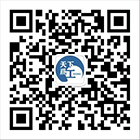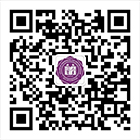我们非常荣幸邀请到悉尼科技大学的金大勇教授来访,他将于2月28日下午2点在唐仲英楼B501做学术报告,欢迎各位老师和学生前来交流。
金大勇,悉尼科技大学生物医学材料及仪器研究院院长,澳洲国家可集成生物医疗仪器与技术转化基地所长(ARC Research Hub for Integrated Device for End-user Analysis at Low-levels), 近三年内作为通讯作者先后在《自然》及子刊中发表了五篇原创性工作(Nature 2017、Nature Nanotechnology 2013、Nature Photonics 2014、Nature Communications 2014 和 2016),一篇特邀综述(Nature Nanotechnology 2015)和一篇特邀评论(Nature Photonics 2016)。同时他也是五项国际专利的发明人。凭着在交叉学科取得的卓越成就,他荣获了2015年澳洲国家级科研最高奖尤里卡奖交叉学科创新奖。他也是2016年澳大利亚百名科技创新领军人物,和2017年澳洲科学院工程科学奖John Booker奖章获得者。
Distinguished Professor JIN, Dayong(金大勇)
University of Technology Sydney(澳大利亚悉尼科技大学)
Upconversion Super Dots for Biophotonics and Nanophotonics Applications
Detection, quantification, or localisation of particular cells or molecules – quickly, sensitively and accurately – is fundamental to many areas of modern biomedical research and industry. My talk will showcase our research from developing both luminescent materials and photonic sensing techniques to integrated biomedical devices, towards solving the ‘needle in the haystack’ problem in rapid diagnostics of rare cancer cell types.
In 2011, we first developed a low-cost time-gated chopper unit, compatible to any fluorescence microscopes, to realize background-free imaging of rare cells. In 2013, we have overcome the barrier of concentration quenching to address the brightness limitation of upconversion luminescence probes, and created the brightest nanocrystal for single molecule sensing. In 2014, we reported a new lifetime scanning technique and a library of luminescent probes with tunable microsecond lifetimes (t), offering significant advantages in high speed and high throughput sensing of multiple analytes in a single test (multiplexing). This year, we further developed a low-power high-contrast upconversion super resolution nanoscopy technique for subcellular imaging applications.
These developments enable rare-event detection, quantification and visualization for the discovery of new biomarkers and development of diagnostic tests. A joint effort across a broad spectrum of disciplines via interdisciplinary, interdisciplinary and industry collaborations will have a major impact in quantitative luminescence measurements of low-abundance biomolecules and single cells for a broad range of diagnostics applications.
Key Papers
[1] Zhao J, et al, Nature Nanotechnology, 8, 729-734 (2013),
[2] Lu Y, et al, Nature Communications, 5, 3741 (2014),
[3] Lu Y, et al, Nature Photonics, 8, 32-36 (2014),
[4] Zhou B, et al, Nature Nanotechnology, 10 (11), 924-936 (2015)
[4] Liu D, et al, Nature Communications, doi:10.1038/ncomms10254 (2016),
[5] Liu Y, et al, Nature, doi:10.1038/nature21366 (2017)


